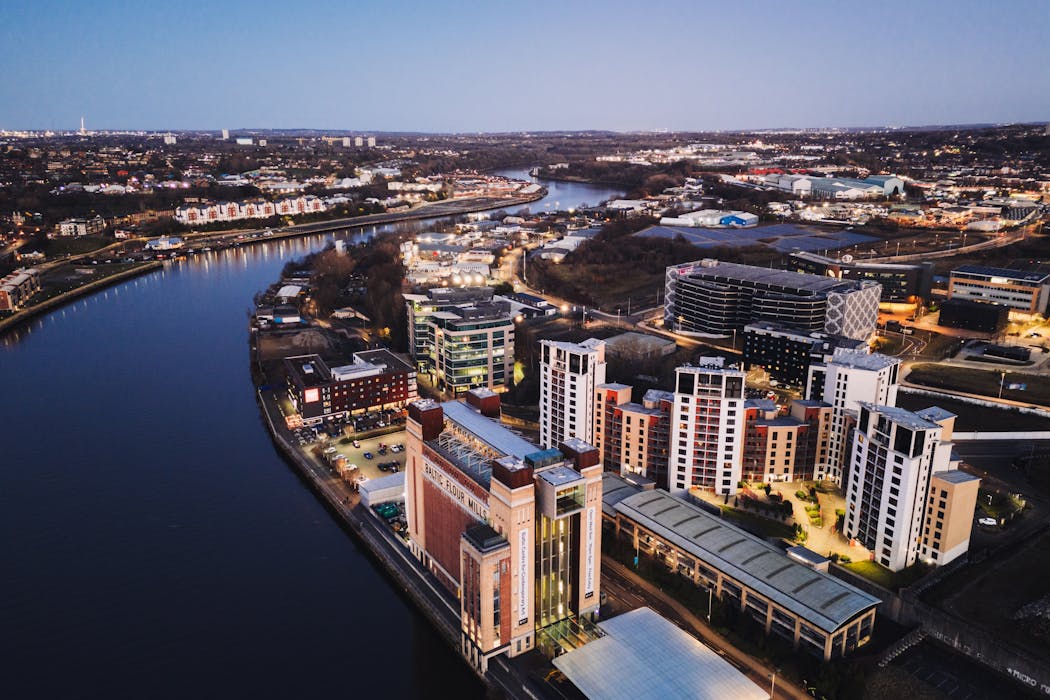
Around a quarter of UK homes lie on disused coalfields. These abandoned coal mines are flooded with water that is naturally heated by the Earth.
This has enormous potential as a sustainable energy source. Schemes such as the mine water district heat network in Gateshead, in north-east England, are already providing low-carbon, cheaper heat and hot water to residential homes.
To maximise the full potential of this energy source by developing new schemes and expanding existing ones, it is critical that people have trust in new energy systems and are motivated to connect to them. This will speed up the number of homeowners signing up.
Communities built around former coal mines tend to have higher levels of socioeconomic disadvantage compared to other areas of the UK, with more social housing. Mine water district heating is a potential source of cheaper energy for these communities, but social housing residents must be involved in the transition to new, sustainable energy systems. This will ensure a smooth transition and avoid people feeling like new systems are being imposed on them.
In our new research, we interviewed 18 Gateshead residents about what a switch to mine water heating would mean for them.
We spoke to people from a community where homes are scheduled to move from gas heating to the mine water district heat network. Residents told us about their awareness of mine water heat, their motivations to connect and resources which could support them through the transition. We heard from social housing tenants, homeowners, private renters and landlords to understand how specific issues would affect different people’s lives and homes.
Read more: How mine water could warm up the UK’s forgotten coal towns
Our participants had limited awareness of mine water heat. Only around a third of participants in our study had previously heard of district heat networks. People had a range of incorrect assumptions about how they work. Improving awareness is clearly needed to enable homeowners to make informed decisions about whether to adopt the new technology. This could involve working with residents to design resources to increase their understanding and ensure that the issues most important to residents are addressed.
Residents we interviewed liked the idea of cleaner, greener energy, but many people said cost would be a barrier unless the mine water heat is cheaper than gas. They would happily “do their bit” for the environment, but not if it means higher bills.

One homeowner, a woman in her 70s, told us: “We like to do our bit with recycling and trying to save on energy costs, but that’s a luxury. If you’re a pensioner, you can’t. You don’t have unlimited resources … it shouldn’t [cost] any more than an ordinary gas boiler.”
The people we spoke to were proud that heat is being produced from old mines. They felt it connected the area’s coal mining heritage to a more sustainable future. Our participants liked the idea of generating energy from the disused mines in the area. When another 38-year-old resident discovered that the heat came from mine water, they said it “feels like a waste that we haven’t been tapping into that sooner”.
Community co-creation
Mine water district heating schemes provide an opportunity to involve communities in their energy futures. Community engagement ensures that people feel network expansion is being done with them, and not to them.
Raising awareness is important, but that isn’t enough to increase trust and acceptance. Addressing incorrect assumptions that sustainable energy will inherently be more expensive for consumers is key.
In Gateshead, there are cost savings through cheaper energy bills and no maintenance costs to the consumer. Communication of this information to consumers is vital to overcome resistance.
Building a narrative linked to the legacy of energy from coal mines can resonate with communities who are proud of their coal mining heritage. However, that needs to be achieved without glorifying mining history, because so many communities were adversely affected by the consequences of mine closures.
Don’t have time to read about climate change as much as you’d like?
Get a weekly roundup in your inbox instead. Every Wednesday, The Conversation’s environment editor writes Imagine, a short email that goes a little deeper into just one climate issue. Join the 47,000+ readers who’ve subscribed so far.
This article is republished from The Conversation, a nonprofit, independent news organization bringing you facts and trustworthy analysis to help you make sense of our complex world. It was written by: Michael Smith, Northumbria University, Newcastle and Faye Doughty, Northumbria University, Newcastle
Read more:
- How mine water could warm up the UK’s forgotten coal towns
- Underground water heat will aid bid to hit renewable targets
- As mining returns to Cornwall, lithium ambitions tussle with local heritage
Michael Smith receives funding from Innovate UK and Northern Net Zero Accelerator.
Faye Doughty does not work for, consult, own shares in or receive funding from any company or organisation that would benefit from this article, and has disclosed no relevant affiliations beyond their academic appointment.


 The Conversation
The Conversation
 Associated Press US News
Associated Press US News Detroit News
Detroit News Raw Story
Raw Story The Daily Beast
The Daily Beast RadarOnline
RadarOnline ABC30 Fresno Sports
ABC30 Fresno Sports AlterNet
AlterNet The Gaston Gazette Sports
The Gaston Gazette Sports Bozeman Daily Chronicle Sports
Bozeman Daily Chronicle Sports